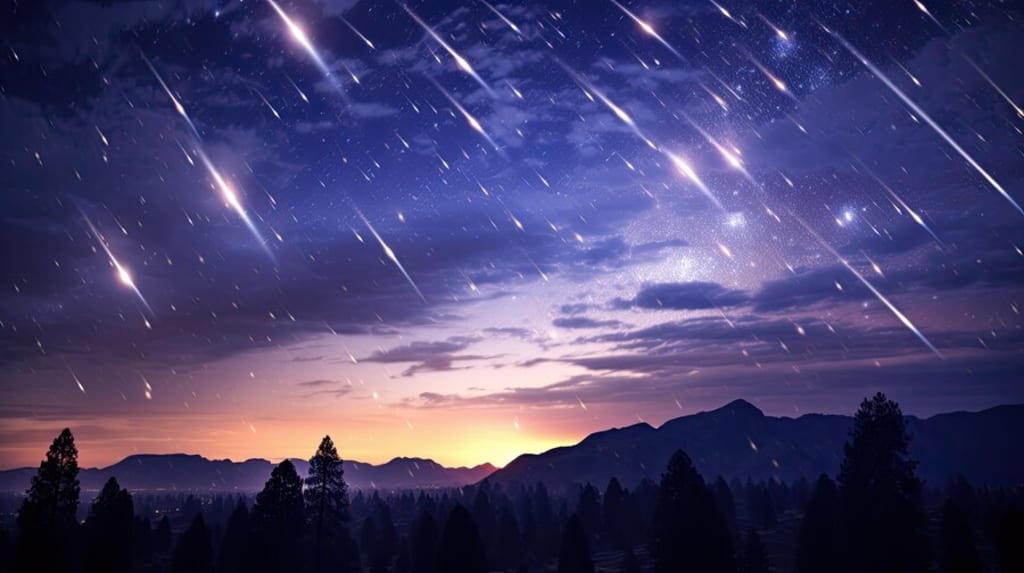Stargazers Alert: Get Ready for an Awesome Sky Show in December!
An Amazing month for those who love stargazing

Hey there, skywatchers! December is going to be an exciting month for stargazing. Get ready to witness the Geminid meteor shower and catch a glimpse of asteroid Vesta. Plus, the Moon will be aligning with some cool planets like Venus, Saturn, and Jupiter on specific dates. Let's dive into the details!
Vesta at Opposition and Geminid Meteors!
Get ready for the most reliable meteor shower of the year, the Geminids! The best part? There won't be any interference from a bright Moon, so the meteors will be even more visible. The Geminids will peak overnight on December 13th into the morning of the 14th. It's going to be a spectacular show! And if you want to take your stargazing skills to the next level, try observing asteroid Vesta with binoculars or a small telescope. How cool is that?
December Skywatching Highlights:
December 7-10 – Catch the Slimming Crescent Moon, Venus, and Spica
Wake up early in the morning and look towards the east. You'll see a beautiful crescent Moon rising together with Venus and a bright star called Spica. It's a lovely sight to start your day with!
December 12 – New Moon
It's a new moon, which means the sky will be nice and dark. Perfect for stargazing!
December 13 – The Geminid Meteors Peak
Get ready for the Geminid meteor shower! If you're in the Northern Hemisphere, you can start looking for meteors as early as 9 or 10 p.m. The number of meteors will increase after midnight, so make sure to bundle up, find a spot away from bright lights, and enjoy the show. The meteors will be falling all over the sky!
December 17 – Spot the Crescent Moon and Saturn
As the sun sets, look towards the southwest and you'll see the crescent Moon hanging out near Saturn. If you have binoculars or a small telescope, you might even spot Saturn's giant moon, Titan, right next to the planet. How cool is that?
December 21 – Jupiter and the Nearly Full Moon
As darkness falls, look towards the southeast and you'll see Jupiter hanging out with the nearly full Moon. They will glide across the sky together all night long. It's going to be a mesmerizing sight!
December 26 – Full Moon
It's a full moon night! The sky will be bright and beautiful. Take a moment to appreciate the beauty of the moon.
All Month – Observe Asteroid Vesta
Asteroid Vesta will be at opposition all month, which means it will be directly on the opposite side of Earth from the Sun. This is the best time to try and spot it with binoculars or a small telescope. Look for it moving northward in the sky between the constellations Gemini and Orion. You can use a skywatching app to find its precise position on the night you're observing. How amazing is that?
So, get ready for an incredible sky show this December! Grab your binoculars, find a cozy spot, and enjoy the wonders of the universe. Happy stargazing, middle schoolers!
Get ready for the best views of the Moon and planets, the awesome Geminid meteor shower, and a chance to observe an asteroid with your own eyes. It's going to be an epic month for stargazing!
The Moon will be visiting different planets in the sky throughout December. On the 7th to the 10th, you can see a beautiful grouping of Venus, the crescent Moon, and a bright star called Spica in the southeast. It's a lovely sight to start your day with!
On the 17th, you'll find the crescent Moon hanging out just below Saturn in the southwest after sunset. If you have binoculars, you might even spot Saturn's giant moon, Titan, right next to the planet. How cool is that?
Later in the month, on the 21st and 22nd, the nearly full moon will be hanging out with Jupiter. You can see them towards the southeast early in the night, and they will travel together across the sky all night long. It's going to be a magical experience!
Now, let's talk about the Geminid meteor shower. It's the most reliable meteor shower of the year, and it's happening in December. The peak of the shower will be on the night of December 13th and the morning of the 14th. If you're in the Northern Hemisphere, you can start looking for meteors as early as 9 or 10 p.m. Dress warmly, find a dark spot away from bright lights, and enjoy the show. You might even see a meteor every minute!
So, mark your calendars and get ready for an amazing sky show this December. It's going to be a month full of celestial wonders!
About the Creator
Enjoyed the story? Support the Creator.
Subscribe for free to receive all their stories in your feed. You could also pledge your support or give them a one-off tip, letting them know you appreciate their work.





Comments
There are no comments for this story
Be the first to respond and start the conversation.